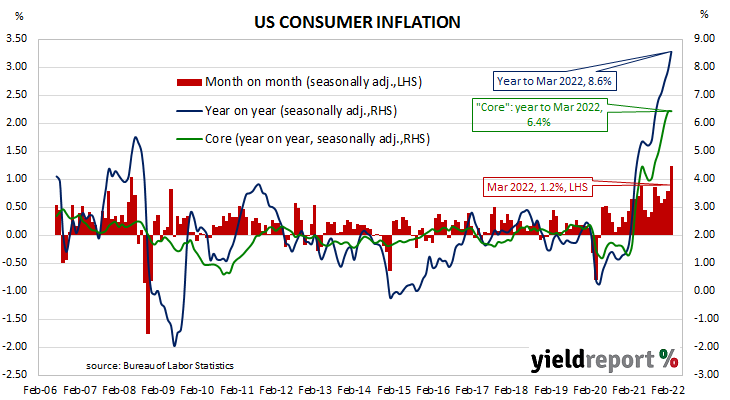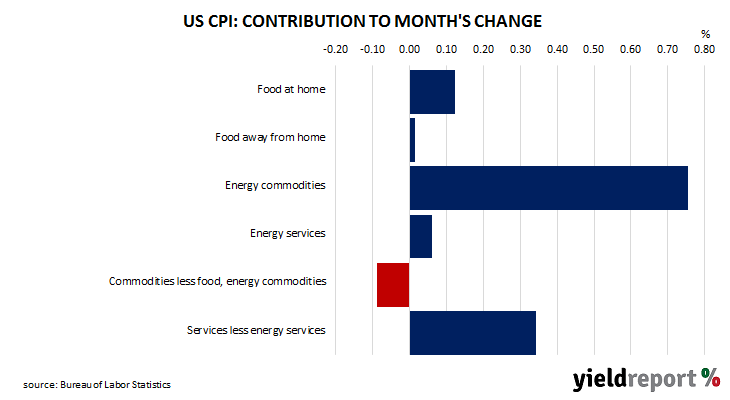Summary: US CPI up 1.2% in March, in line with expectations; “core” rate up 0.3%; unlikely to change Fed’s near-term thinking; Treasury yields down, rate rise expectations ease slightly; “base effects” to put downward pressure on annual figure from next month; energy prices main driver of headline rise.
The annual rate of US inflation as measured by changes in the consumer price index (CPI) halved from nearly 3% in the period from July 2018 to February 2019. It then fluctuated in a range from 1.5% to 2.0% through 2019 before rising above 2.0% in the final months of that year. Substantially lower rates were reported from March 2020 to May 2020 and they remained below 2% until March 2021. Rates has risen significantly since then.
The latest CPI figures released by the Bureau of Labor Statistics indicated seasonally-adjusted consumer prices jumped by 1.2% on average in March. The result was in line with expectations but higher than February’s 0.8%. On a 12-month basis, the inflation rate accelerated from February’s reading of 7.9% to 8.6%.
“Headline” inflation is known to be volatile and so references are often made to “core” inflation for analytical purposes. Core inflation, a measure of inflation which strips out the more variable food and energy components of the index, increased by 0.3% on a seasonally-adjusted basis for the month. The rise was less than the 0.5% expected as well as February’s 0.5% increase. The annual growth rate remained unchanged at 6.4%.
“Used car prices declined but housing costs lifted and inflation in the services sector continues to rise. Overall, this data is unlikely to change the Federal Reserve’s near term thinking about the need to hike,” said ANZ senior economist Adelaide Timbrell.
US Treasury bond yields fell on the day, especially at the short end of the yield curve. By the close of business, the 2-year Treasury yield had shed 10bps to 2.41%, the 10-year yield had lost 6bps to 2.73% while the 30-year yield finished 2bps lower at 2.81%.
In terms of US Fed policy, expectations of higher federal funds rates over the next 12 months eased a little. At the close of business, May contracts implied an effective federal funds rate of 0.75%, 42bps higher than the current spot rate. June contracts implied 0.85% while May 2023 futures contracts implied an effective federal funds rate of 2.87%, 254bps above the spot rate.
NAB economist Taylor Nugent thought there may be reason to expect some easing of US inflation rates in the short-term. “Base effects begin to put downward pressure on the year-ended reads from next month, suggesting the peak in the CPI numbers may be in, but the strength of inflation in the persistent rents series and tight labour markets suggest the fall-back is unlikely to be precipitous.”
The largest influence on headline results is often the change in fuel prices. “Energy commodities”, the segment which contains vehicle fuels, increased by 18.1%, adding 0.76 percentage points. However, prices of non-energy services, the segment which includes actual and implied rents, also had a noticeable effect, adding 0.34 percentage points after they increased by 0.6% on average.



